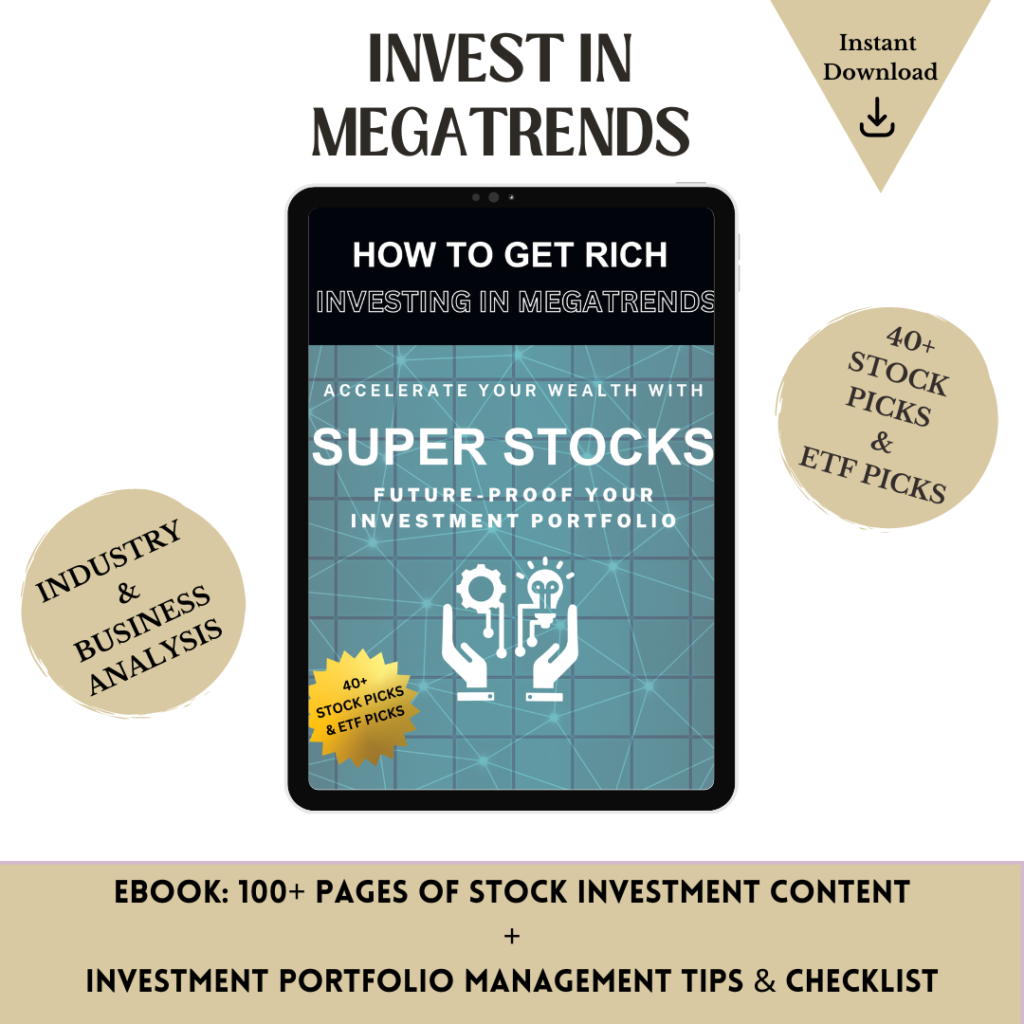What are Stocks?

Stocks represent ownership in a company.
Effectively, by owning shares in a company, you are a partial owner of the company, even though you do not manage it or run the daily business operations.
If you hold common stock, you are entitled to dividend distributions (depending on the company policy) and certain voting rights.
If you hold preference stock, you are entitled to preferred voting rights.
Why invest in stocks?
Investing in stocks can generate positive returns.
As a stock investor, you earn from 2 ways:
i) Capital gains
ii) Dividends
Over the long term, the historic annualized average return of the US S&P500 stocks is around 10.13% since its 1957 inception through the end of 2022. This is the returns of just a buy-and-hold passive strategy. Simple – yet higher returns than you putting your money in a bank savings or fixed deposit account.
What if you invest in other higher growth stocks and employ more advanced portfolio management or trading strategies? Your investment returns can likely go higher.
What type of stocks can you invest in?
There are different types of stocks which differ in their characteristics:
i) Value stocks –
Stocks in companies that are financially healthy. Such companies are typically in stable and defensive industries. Their market price is lower than their actual value, thus it can be an attractive investment considering that it may return eventually to its fair value
ii) Growth stocks –
Stocks in companies that are high growth. Such companies are typically in innovative industries such as technology, telecommunications and biomedical research. However, high growth companies may not necessarily be profitable or cash-flow generating, thus they exhibit higher risk. Nonetheless, with higher risk, there is a potential for higher returns.
iii) Dividend stocks –
Dividend stocks are stocks in companies that pay dividends to their shareholders. By holding dividend stocks, you get to collect passive income in the form of dividends every year. At the same time, any capital appreciation on the stock would provide additional upside.
You can invest in stocks across different countries as well:
i) Stocks in developed countries (eg. US, UK, Europe, Australia) are less volatile.
ii) Stocks in emerging markets (eg. China, Brazil, India) are more volatile.
How to decide which stocks to invest in?

In order to determine which stocks to invest in, it is ideal to understand both fundamental analysis and technical analysis.
Fundamental analysis involves analysing the business and financial health as well as growth potential and valuation of a company.
You will have to understand the industry of the company you are analysis, by assessing the market growth, competitive landscape a well as industry risks. This requires you to think like a management consultant.
You will need to understand how to analyse a company’s financial statements and explore key metrics such as revenue, earnings, cash flow, debt and more. This requires you to think like a financial analyst.
Additionally, you need to understand the difference between price and value, and compare the market price to an asset’s fair value. Price is what you pay, but value is what you get. If you are able to buy an asset that is priced below its fair value, you stand a chance of making good gains when price increases to its value – this is the concept of value investing.
However, some stocks are priced above their current fair value, but if they are able to grow much faster, break into new markets or expand their market size, and generate profits that exceed market expectations, you can make sizeable returns from them – this is the concept of growth investing.
In order to determine valuation of a company, you can employ various techniques such as comparables analysis or discounted cash flow analysis.
Technical analysis is the art of charting market trends. It involves utilising an asset’s price chart and technical indicators to spot patterns and make informed decisions.
By analysing charts, you can gauge the market sentiment better and time your entries and exits according to what the charts tell you.
In summary, fundamental analysis tells you which stocks to buy, and technical analysis can give you an idea of when to enter or exit a position.
How can I start investing in stocks?
To start investing, you have to open a stock brokerage account with an investment or trading platform.
You should diversify your investments by spreading your investments across different industries, sectors and countries to minimise risk.
A portfolio of between 10-20 stocks would be good enough to reap the benefits of diversification, to ensure that the bad performance of one company does not mess up your whole stock investment portfolio.
Regularly monitor your portfolio and make necessary adjustments. This dynamic approach ensures that your portfolio strategy and composition aligns with your evolving financial goals and the ever-changing market. Be adaptable and adjust your strategy based on economic trends, geopolitical events, and market sentiment.
If you are younger and have a higher risk appetite, you can invest in growth stocks which have higher returns despite the higher risk. This is because you have a longer investment timeframe, which enables you to ride through any market downturns which may be temporary and last only for a short duration. In order to reduce the risk of investing in growth stocks, remember to diversify your stock holdings as outlined above.
Academy: Learn to Invest in & Trade Stocks
If you are interested to learn how to analyse stocks like a professional investor,
check out the Stock Investment Mastery Course:

If you are interested to invest in stocks that are likely to generate attractive market-beating returns over the next decade, check out the How to Get Rich with Megatrends ebook:

If you have any questions or want to connect:
i) send an email to: [email protected]; or
ii) send a message via: https://bit.ly/contact-TFF